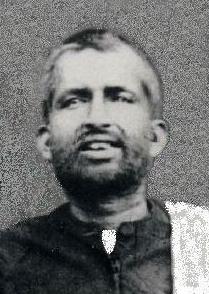
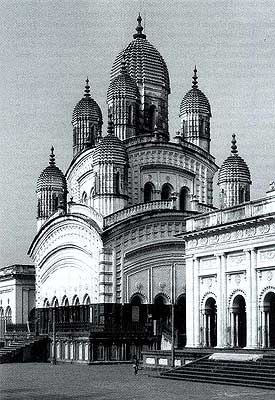
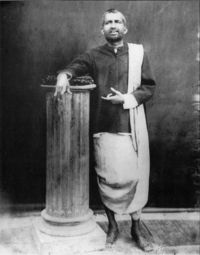
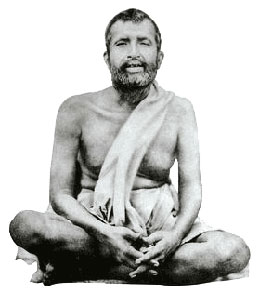
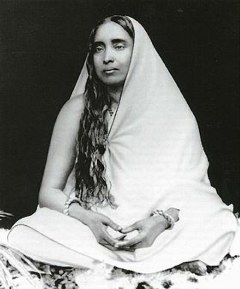
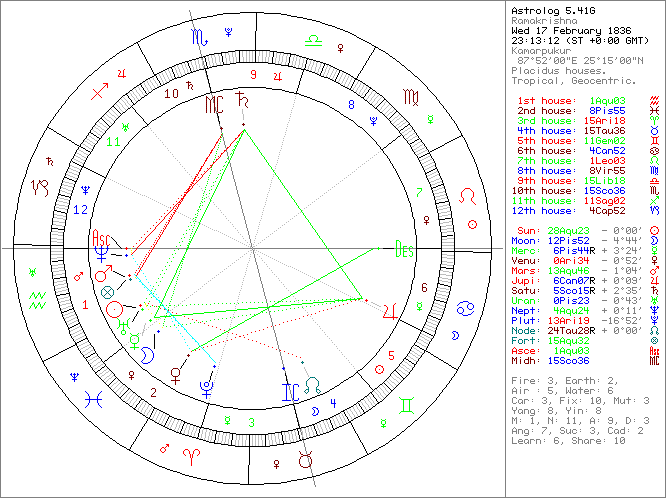
Planet
|
Longitude
|
Latitude
|
Declin.
|
Const.
|
H.D.
|
Period
|
Inclin.
|
O. Range
|
Uranus
|
0Pi24
|
0s43
|
12s01
|
Aqr
|
20.0
|
84
|
0.8
|
|
Venus
|
0Ar34
|
0s52
|
0s34
|
Psc
|
0.7
|
1
|
3.4
|
|
RR43
|
0Li58 r
|
28n49
|
25n52
|
Com
|
49.2
|
285
|
28.5
|
37.5->49.2
|
Ascend
|
1Aq03
|
0n00
|
19s57
|
Cap
|
||||
QD112
|
1Pi07
|
6s06
|
16s47
|
Aqr
|
9.6
|
82
|
14.5
|
8.0->29.9
|
Huya
|
1Ar27
|
4s03
|
3s08
|
Psc
|
43.8
|
247
|
15.5
|
28.5->50.2
|
FY9
|
1Aq28
|
20s30
|
39s45
|
Mic
|
41.9
|
305
|
29.0
|
38.1->52.5
|
VQ94
|
1Ar32
|
55s07
|
48s17
|
Phe
|
149.5
|
2616
|
70.5
|
6.6->373.1
|
QB243
|
2Ta28
|
6n08
|
18n05
|
Ari
|
42.4
|
204
|
6.8
|
15.3->54.0
|
CF119
|
2Ar54
|
17n25
|
17n05
|
Peg
|
102.8
|
839
|
19.7
|
38.5->139.
|
Chiron
|
2Ge56
|
4s25
|
16n25
|
Tau
|
13.9
|
49
|
7.0
|
8.4->18.4
|
OO67
|
2Sc58 r
|
19n16
|
5n38
|
Vir
|
148.5
|
13017
|
20.0
|
20.7->1086
|
Chaos
|
3Sa00
|
2s58
|
23s41
|
Sco
|
48.9
|
309
|
12.0
|
40.8->50.5
|
CY118
|
3Ta23
|
20s53
|
7s01
|
Cet
|
105.0
|
864
|
25.7
|
34.7->146.
|
CR105
|
3Pi37
|
10s55
|
20s20
|
Aqr
|
103.8
|
3318
|
22.9
|
43.9->401.
|
Vertex
|
3Vi37
|
|||||||
Apogee
|
3Ca39 r
|
3n12
|
26n37
|
Gem
|
||||
OM67
|
3Li47 r
|
15s12
|
15s25
|
Crv
|
99.3
|
974
|
23.3
|
39.4->157.
|
AW197
|
4Pi09
|
15n38
|
4n35
|
Peg
|
48.1
|
323
|
24.4
|
41.1->53.1
|
Neptune
|
4Aq24
|
0n11
|
19s00
|
Cap
|
30.1
|
164
|
1.8
|
|
96PW
|
4Vi51 r
|
7n01
|
16n16
|
Leo
|
151.5
|
3580
|
29.3
|
2.6->465.4
|
MS4
|
5Ta15
|
0s55
|
12n25
|
Ari
|
36.4
|
271
|
17.7
|
35.7->48.1
|
Saturn
|
5Sc15 r
|
2n35
|
10s51
|
Lib
|
9.8
|
29
|
2.5
|
|
UR163
|
5Vi19 r
|
0s27
|
9n09
|
Leo
|
57.3
|
372
|
0.7
|
37.3->66.2
|
BU48
|
6Li02 r
|
11n57
|
8n34
|
Vir
|
38.5
|
193
|
14.2
|
20.6->46.2
|
Jupiter
|
6Ca07 r
|
0n09
|
23n29
|
Gem
|
5.2
|
12
|
1.3
|
|
Mercury
|
6Pi44 r
|
3n24
|
5s54
|
Aqr
|
0.3
|
0
|
7.0
|
|
RP120
|
6Sc55 r
|
0s38
|
14s26
|
Lib
|
106.1
|
415
|
119.3
|
2.5->108.7
|
Crantor
|
6Sa59
|
10n06
|
11s32
|
Oph
|
14.6
|
86
|
12.8
|
14.0->24.8
|
RN43
|
7Ca12 r
|
19s32
|
3n45
|
Mon
|
41.7
|
270
|
19.3
|
40.9->42.7
|
TC302
|
7Cp39
|
33s51
|
57s00
|
Tel
|
71.2
|
409
|
35.0
|
38.7->71.5
|
Logos
|
7Aq45
|
0n10
|
18s12
|
Cap
|
50.1
|
302
|
2.9
|
39.5->50.5
|
UJ438
|
7Aq45
|
2n35
|
15s51
|
Cap
|
25.5
|
74
|
3.8
|
8.2->26.9
|
GM137
|
8Ca02 r
|
3n03
|
26n15
|
Gem
|
7.9
|
23
|
15.7
|
7.1->8.9
|
SB60
|
8Ca27 r
|
0s45
|
22n27
|
Gem
|
44.5
|
275
|
23.9
|
37.9->46.6
|
Radamantus
|
8Cp29
|
12s33
|
35s43
|
Sgr
|
44.9
|
242
|
12.7
|
32.7->45.0
|
KF77
|
8Le32 r
|
4n00
|
22n00
|
Cnc
|
30.8
|
133
|
4.3
|
20.0->32.2
|
Asbolus
|
8Vi35 r
|
8n28
|
16n11
|
Leo
|
19.9
|
76
|
17.6
|
6.9->28.9
|
Ceto
|
8Pi53
|
4n20
|
4s14
|
Aqr
|
116.5
|
1014
|
22.4
|
17.6->184.
|
GZ32
|
9Ta22
|
13s24
|
1n54
|
Cet
|
26.3
|
111
|
15.0
|
18.1->28.0
|
RD215
|
9Sc32 r
|
5n20
|
9s37
|
Lib
|
107.3
|
1340
|
26.0
|
37.6->205.
|
AZ84
|
9Sc39 r
|
7s17
|
21s36
|
Lib
|
34.1
|
248
|
13.6
|
32.5->46.5
|
Okyrhoe
|
9Ge52
|
16s22
|
5n45
|
Ori
|
6.9
|
23
|
15.8
|
5.9->10.3
|
Chariklo
|
9Aq55
|
4n17
|
13s40
|
Aqr
|
17.2
|
62
|
23.4
|
13.0->18.4
|
Amycus
|
10Ta19
|
13n12
|
27n24
|
Tri
|
32.1
|
126
|
13.3
|
15.3->34.9
|
Ixion
|
10Ta27
|
8s59
|
6n26
|
Cet
|
30.8
|
249
|
19.6
|
29.9->49.3
|
FZ53
|
10Pi28
|
23n08
|
13n46
|
Peg
|
32.6
|
116
|
34.9
|
12.3->35.1
|
GV9
|
10Pi51
|
21n31
|
12n24
|
Peg
|
44.9
|
271
|
22.0
|
38.6->45.1
|
TO66
|
11Le07 r
|
19n20
|
35n56
|
LMi
|
44.0
|
287
|
27.4
|
38.4->48.6
|
CE10
|
11Li21 r
|
27s09
|
29s14
|
Hya
|
17.6
|
31
|
145.0
|
2.0->17.7
|
PA44
|
11Le36 r
|
3s24
|
14n03
|
Cnc
|
17.9
|
54
|
3.3
|
3.5->25.0
|
PJ30
|
11Ca38r
|
0n56
|
23n53
|
Gem
|
105.5
|
1383
|
5.5
|
29.0->219.
|
PB112
|
11Sc52 r
|
11s24
|
26s13
|
Hya
|
113.9
|
1108
|
15.4
|
35.3->178.
|
Moon
|
12Pi52
|
4s44
|
11s07
|
Aqr
|
1.0
|
0
|
5.0
|
|
Pluto
|
13Ar19
|
16s52
|
10s17
|
Cet
|
47.5
|
248
|
17.2
|
29.7->49.2
|
DA62
|
13Cp27
|
44s43
|
67s01
|
Pav
|
6.0
|
21
|
52.3
|
4.1->11.3
|
WN188
|
13Ar39
|
24s50
|
17s27
|
Cet
|
12.9
|
54
|
26.9
|
2.2->26.5
|
Pylenor
|
13Li45 r
|
4n41
|
1s07
|
Vir
|
15.9
|
68
|
5.5
|
11.7->21.8
|
Mars
|
13Aq47
|
1s04
|
17s44
|
Cap
|
1.4
|
2
|
1.9
|
|
Thereus
|
13Ca47r
|
21s06
|
1n45
|
Mon
|
13.6
|
38
|
20.2
|
8.9->13.7
|
CO1
|
13Aq51
|
15s56
|
31s52
|
PsA
|
21.5
|
94
|
19.7
|
10.9->30.4
|
MW12
|
13Ge52r
|
20s51
|
1n46
|
Ori
|
42.8
|
311
|
21.5
|
39.4->52.5
|
QF6
|
13Vi57 r
|
8n32
|
14n11
|
Leo
|
8.1
|
19
|
23.8
|
2.2->12.1
|
Deucalion
|
14Ar12
|
0s13
|
5n25
|
Psc
|
43.6
|
293
|
0.4
|
41.4->46.7
|
Echeclus
|
14Sc13
|
3n11
|
13s05
|
Lib
|
10.2
|
34
|
4.4
|
5.8->15.4
|
Quaoar
|
14Ta24
|
5s03
|
11n21
|
Ari
|
42.5
|
287
|
8.0
|
41.9->45.1
|
PN34
|
15Pi12
|
12n03
|
5n17
|
Psc
|
15.5
|
171
|
16.6
|
13.3->48.4
|
CC22
|
15Pi17
|
1n16
|
4s38
|
Aqr
|
9.2
|
20
|
11.1
|
5.3->9.4
|
VU2
|
15Ta17
|
2n47
|
19n06
|
Ari
|
3.2
|
18
|
13.8
|
3.2->10.8
|
Midheav
|
15Sc36
|
0n00
|
16s32
|
Lib
|
||||
TY364
|
15Le58 r
|
0s55
|
15n11
|
Cnc
|
36.3
|
244
|
24.8
|
36.3->41.9
|
TD10
|
16Li02 r
|
1n20
|
5s05
|
Vir
|
124.0
|
927
|
6.0
|
12.3->177.
|
Cyllarus
|
16Sa22
|
5s11
|
27s55
|
Oph
|
23.4
|
133
|
12.6
|
16.3->36.0
|
RL43
|
16Sc34
|
11n09
|
6s06
|
Lib
|
24.7
|
121
|
12.3
|
23.5->25.5
|
QB1
|
16Vi35 r
|
0n25
|
5n41
|
Leo
|
46.9
|
293
|
2.2
|
41.2->47.0
|
RZ214
|
17Li03 r
|
5s47
|
12s03
|
Vir
|
91.6
|
777
|
20.5
|
36.9->132.
|
XX143
|
17Ge05r
|
2s35
|
20n15
|
Tau
|
18.8
|
76
|
6.8
|
9.7->26.3
|
CO104
|
17Pi43
|
0s09
|
5s00
|
Aqr
|
26.4
|
118
|
3.1
|
20.5->27.5
|
KX14
|
17Pi48
|
0n21
|
4s30
|
Aqr
|
37.0
|
241
|
0.4
|
37.0->40.5
|
TL66
|
18Sa05
|
16n33
|
6s26
|
Oph
|
99.6
|
756
|
24.0
|
34.7->131.
|
WL7
|
18Ca08r
|
11n10
|
33n17
|
Gem
|
15.6
|
91
|
11.1
|
15.0->25.6
|
HB57
|
18Ge26r
|
13s58
|
9n02
|
Ori
|
123.1
|
2060
|
15.5
|
38.5->285.
|
Orcus
|
18Sc51r
|
13s17
|
30s10
|
Cen
|
41.0
|
246
|
20.6
|
30.5->48.0
|
SQ73
|
18Sa53
|
15s05
|
38s01
|
Sco
|
15.7
|
74
|
17.5
|
14.6->20.6
|
VR130
|
18Sc59r
|
2n38
|
14s57
|
Lib
|
32.8
|
117
|
3.5
|
14.8->33.1
|
UX25
|
19Li24 r
|
1s26
|
8s55
|
Vir
|
40.7
|
280
|
19.5
|
36.6->49.0
|
Pelion
|
19Ar34
|
8s50
|
0s31
|
Cet
|
20.3
|
90
|
9.4
|
17.4->22.7
|
Nessus
|
19Ta34
|
6n00
|
23n25
|
Ari
|
31.9
|
122
|
15.6
|
11.9->37.4
|
Bienor
|
20Li20 r
|
14s40
|
21s29
|
Vir
|
14.9
|
67
|
20.7
|
13.2->19.9
|
TX300
|
21Le56 r
|
0n07
|
14n19
|
Leo
|
48.2
|
286
|
25.8
|
38.3->48.6
|
Teharonhi
|
22Ca09r
|
0n25
|
22n03
|
Gem
|
43.5
|
295
|
2.6
|
43.0->45.7
|
FP185
|
22Ta12
|
26s12
|
7s03
|
Eri
|
128.9
|
3269
|
30.9
|
34.5->406.
|
DH5
|
22Cp22
|
15n31
|
6s16
|
Aql
|
29.6
|
103
|
22.5
|
13.9->30.1
|
RM43
|
22Sa45
|
0n04
|
23s11
|
Oph
|
104.4
|
855
|
28.9
|
34.8->145.
|
RG33
|
22Ca54r
|
37n29
|
58n08
|
UMa
|
16.7
|
29
|
35.8
|
2.2->16.7
|
XA255
|
23Ge01r
|
4s17
|
19n00
|
Tau
|
20.2
|
165
|
12.7
|
9.4->50.8
|
GB32
|
23Ge10r
|
14s15
|
9n03
|
Ori
|
132.8
|
3065
|
14.2
|
35.8->386.
|
CZ118
|
23Ge44r
|
27n22
|
50n38
|
Aur
|
122.4
|
1250
|
27.7
|
38.1->193.
|
FZ173
|
23Ta51
|
10n22
|
28n46
|
Ari
|
105.7
|
795
|
12.7
|
32.7->138.
|
Node
|
24Ta06 r
|
0n00
|
18n49
|
Tau
|
||||
Sedna
|
24Pi10
|
6s23
|
8s11
|
Cet
|
161.1
|
11643
|
12.0
|
75.8->951.
|
Eris
|
24Aq23
|
41s37
|
51s30
|
Gru
|
78.8
|
555
|
44.0
|
37.8->97.3
|
XR190
|
24Cp41
|
35n52
|
14n09
|
Aql
|
59.6
|
430
|
46.7
|
52.2->61.7
|
RZ215
|
24Vi57 r
|
7s14
|
4s38
|
Vir
|
110.0
|
1025
|
25.4
|
31.2->172.
|
Typhon
|
25Cp19
|
1s56
|
23s00
|
Sgr
|
48.5
|
231
|
2.4
|
17.4->58.0
|
Elatus
|
25Vi22 r
|
5n50
|
7n12
|
Vir
|
17.0
|
45
|
5.5
|
7.5->17.9
|
LE31
|
25Aq23
|
14s58
|
27s05
|
PsA
|
5.5
|
23
|
152.6
|
4.3->11.9
|
VS2
|
25Vi25 r
|
12s22
|
9s31
|
Crt
|
40.9
|
249
|
14.8
|
36.6->42.6
|
BL41
|
25Cp48
|
2n20
|
18s42
|
Sgr
|
10.3
|
31
|
13.4
|
7.1->12.6
|
OP32
|
25Ge49r
|
27s23
|
3s59
|
Ori
|
47.5
|
286
|
27.2
|
39.1->47.8
|
XZ255
|
25Sc53
|
1n04
|
18s13
|
Lib
|
16.3
|
63
|
2.6
|
15.3->16.5
|
Hylonome
|
26Ta00
|
3s41
|
15n42
|
Tau
|
27.2
|
126
|
4.2
|
18.9->31.3
|
YQ179
|
26Pi03
|
19s25
|
19s19
|
Cet
|
106.6
|
835
|
20.9
|
37.0->140.
|
GQ21
|
26Ta48
|
9s37
|
10n05
|
Tau
|
98.1
|
910
|
13.4
|
38.5->149.
|
Pholus
|
27Sa37
|
13n16
|
10s10
|
Ser
|
27.4
|
91
|
24.7
|
8.7->31.8
|
Varuna
|
28Sc01
|
10n52
|
9s08
|
Lib
|
44.3
|
281
|
17.2
|
40.6->45.2
|
Sun
|
28Aq23
|
0n00
|
12s03
|
Aqr
|
1.0
|
1
|
0.0
|
|
OX3
|
28Pi55
|
3n06
|
2n25
|
Psc
|
19.0
|
181
|
3.3
|
17.5->46.5
|
EL61
|
29Aq09
|
14s23
|
25s12
|
Aqr
|
35.3
|
282
|
28.3
|
34.7->51.4
|
SA278
|
29Cp42
|
12n17
|
8s13
|
Aql
|
117.3
|
882
|
16.3
|
32.6->151.
|
Planet
|
Longitude
|
RM43
|
0Sa18
|
RG33
|
0Ca27 r
|
XA255
|
0Ge34 r
|
GB32
|
0Ge43 r
|
CZ118
|
1Ge17 r
|
FZ173
|
1Ta24
|
Node
|
1Ta39 r
|
Sedna
|
1Pi43
|
Eris
|
1Aq56
|
XR190
|
2Cp14
|
RZ215
|
2Vi30 r
|
Typhon
|
2Cp52
|
Elatus
|
2Vi55 r
|
LE31
|
2Aq56
|
VS2
|
2Vi58 r
|
BL41
|
3Cp21
|
OP32
|
3Ge22 r
|
XZ255
|
3Sc26
|
Hylonome
|
3Ta33
|
YQ179
|
3Pi36
|
GQ21
|
4Ta21
|
Pholus
|
5Sa10
|
Varuna
|
5Sc34
|
Sun
|
5Aq56
|
OX3
|
6Pi29
|
EL61
|
6Aq43
|
SA278
|
7Cp15
|
Uranus
|
7Aq57
|
Venus
|
8Pi07
|
RR43
|
8Vi31 r
|
Ascend
|
8Cp36
|
QD112
|
8Aq40
|
Huya
|
9Pi00
|
FY9
|
9Cp01
|
VQ94
|
9Pi05
|
QB243
|
10Ar01
|
CF119
|
10Pi27
|
Chiron
|
10Ta29
|
OO67
|
10Li31 r
|
Chaos
|
10Sc33
|
CY118
|
10Ar56
|
CR105
|
11Aq10
|
Vertex
|
11Le10
|
Apogee
|
11Ge12r
|
OM67
|
11Vi20 r
|
AW197
|
11Aq42
|
Neptune
|
11Cp57
|
96PW
|
12Le24 r
|
MS4
|
12Ar48
|
Saturn
|
12Li49 r
|
UR163
|
12Le52 r
|
BU48
|
13Vi36 r
|
Jupiter
|
13Ge40r
|
Mercury
|
14Aq17r
|
RP120
|
14Li28 r
|
Crantor
|
14Sc32
|
RN43
|
14Ge46r
|
TC302
|
15Sa12
|
Logos
|
15Cp18
|
UJ438
|
15Cp18
|
GM137
|
15Ge35r
|
SB60
|
16Ge00r
|
Radamantus
|
16Sa02
|
KF77
|
16Ca05r
|
Asbolus
|
16Le08 r
|
Ceto
|
16Aq26
|
GZ32
|
16Ar56
|
RD215
|
17Li05 r
|
AZ84
|
17Li12 r
|
Okyrhoe
|
17Ta25
|
Chariklo
|
17Cp28
|
Amycus
|
17Ar52
|
Ixion
|
18Ar00
|
FZ53
|
18Aq02
|
GV9
|
18Aq24
|
TO66
|
18Ca40r
|
CE10
|
18Vi54 r
|
PA44
|
19Ca09r
|
PJ30
|
19Ge11r
|
PB112
|
19Li25 r
|
Moon
|
20Aq25
|
Pluto
|
20Pi52
|
DA62
|
21Sa00
|
WN188
|
21Pi12
|
Pylenor
|
21Vi19 r
|
Mars
|
21Cp20
|
Thereus
|
21Ge20 r
|
CO1
|
21Cp24
|
MW12
|
21Ta25 r
|
QF6
|
21Le30 r
|
Deucalion
|
21Pi45
|
Echeclus
|
21Li46
|
Quaoar
|
21Ar57
|
PN34
|
22Aq45
|
CC22
|
22Aq50
|
VU2
|
22Ar50
|
Midheav
|
23Li09
|
TY364
|
23Ca31r
|
TD10
|
23Vi35 r
|
Cyllarus
|
23Sc55
|
RL43
|
24Li07
|
QB1
|
24Le08 r
|
RZ214
|
24Vi36 r
|
XX143
|
24Ta38 r
|
CO104
|
25Aq16
|
KX14
|
25Aq21
|
TL66
|
25Sc38
|
WL7
|
25Ge41r
|
HB57
|
25Ta59 r
|
Orcus
|
26Li24 r
|
SQ73
|
26Sc26
|
VR130
|
26Li32 r
|
UX25
|
26Vi57 r
|
Pelion
|
27Pi07
|
Nessus
|
27Ar07
|
Bienor
|
27Vi53 r
|
TX300
|
29Ca29r
|
Teharonhi
|
29Ge42r
|
FP185
|
29Ar45
|
DH5
|
29Sa55
|